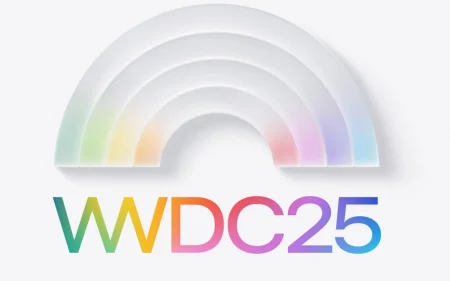The interest in cryptocurrency has never been higher than now, and one crypto particularly making waves is Pi…
This revolutionary cryptocurrency is aiming to be the world’s first mobile-first crypto platform, where users don’t need technical knowledge or expensive rigs to invest in crypto, but can rather mine coins right from their smartphone apps. That’s why Pi, which has millions of users – a.k.a. Pioneers – has seen continued interest after the Mainnet launch in February 2025 and Pi Day on March 14th.
This is even after its price has been wildly fluctuating, having reached all-time lows and highs of USD 0.407 and USD 2.98 respectively in the last 6 months.
Interestingly, more recently, on June 10th, a transaction involving as many as 2 million Pi tokens took place, moving from a liquidity reserve to a new wallet, sparking fresh speculation across Pioneers and the larger crypto community. The entire focus is now on June 28th, which is also known as Pi Day 2, a significant event when the Pi team is expected to provide updates and milestones. Volatile or not, cryptocurrency has people extremely interested – and investing.

What Was The 2 Million Pi Coin Transaction?
As of June 11th, Pi Coin has been trading at USD 0.6395, with a substantial rise in trading volumes. The 2 million Pi coin transaction is a major move; this kind of move is believed to be an over-the-counter (OTC) purchase. According to the Crypto Times, it’s indicative that the tokens were bought privately by an investor rather than via public exchanges.
Such moves are perceived as bullish as they indicate that Pi tokens are still being bought and stacked up by large investors. The price hasn’t moved much since the token transfer, and it has left everyone divided. That’s why the Pi community is now focused on June 28th, a.k.a. Pi Day 2, with many users expecting something big.
The Pi community is keenly awaiting announcements surrounding a few key issues: details on dApps (decentralised applications) and real-world commercial integrations, the highly anticipated Binance listing, and an official statement on the GCV (Global Consensus Value) of the Pi Network, which has been pegged at USD 314,159.

Understanding the Pi Network’s Dual Value System
Of all the highly anticipated updates for Pi Day 2, one of the most important ones is deciding the value of the network. A major development that could possibly redefine digital asset valuation has been the recent uncovering of an official dual-rate structure for the Pi Network. This dynamic pricing mechanism supports both, an external, market-driven rate of the Pi token as well as an internal fixed rate, and Pioneers have been acknowledging the presence of these two discrete price levels for the token.
One is the GCV, which is the internal price of the token in the Pi ecosystem. It’s been emblematically set at an astronomical price of USD 314,159, which is a nod to the value of the token’s eponymous mathematical constant, Pi. This is a community-driven rate that represents the value that’s been agreed upon by the global user base of the network. It’s a stable reference that acts as a baseline for all value-exchange transactions and activities within the Pi ecosystem, supporting barter trade, smart contract settlements, and in-app purchases.
The other is the exchange price, which is the price that the Pi coin is currently trading on external exchanges, which is approximately USD 0.60. This market-dependent price reflects Pi’s trading value and is an analytical reference that’s used for real-world economic bridging, modelling, and comparisons. So, it’s no surprise that it’s highly volatile, influenced by broader crypto trends, demand and supply dynamics, and speculation.
While the dual pricing mechanism for the Pi coin is an innovative experiment, it’s not without its risks. That being said, it could certainly open doors for a wider adoption of the Pi Network with alignment in its value going ahead.

Reshaping Digital Finance
Of course, the Pi network is also plagued with its own set of criticisms, such as glitches with the KYC verification and divided concerns about the long-term value of the token. However, Pi isn’t trying to be some flashy meme coin or DeFi (decentralised finance) token; it’s trying to be familiar, stable, and usable. Its objective is to make crypto as simple and useful in everyday life as possible — think sending money to friends, paying for coffee, or interacting with DeFi or NFT (non-fungible token) apps, but within a simple interface.
Whether or not it becomes one of the go-to digital money systems remains to be seen, but there’s no denying that its focus on identity, accessibility, and real-world usage has been shining the spotlight on it as one of the more grounded projects in crypto currently.
In case you missed:
- The Pi Network: IOUs, Coins, And The Network’s Future
- Pi Day 2025: What Awaits The Pi Network on March 14th?
- The Pi Mainnet Launch – What It Heralds For The Pi Coin and Pioneers
- A Beginner’s Guide to Cryptocurrency Trading in India – Part 2
- The Life of Pi Network – FAQs and Everything Else You Want To Know
- A Beginner’s Guide to Cryptocurrency Trading in India – Part 1
- Memecoins: Scheme-Coins Or Valuable Digital Assets
- Everything you need to know about Pi Network
- Phantom Wallet: The Fastest-Growing Crypto Wallet
- Bitcoin Halving: Everything You Want to Know









